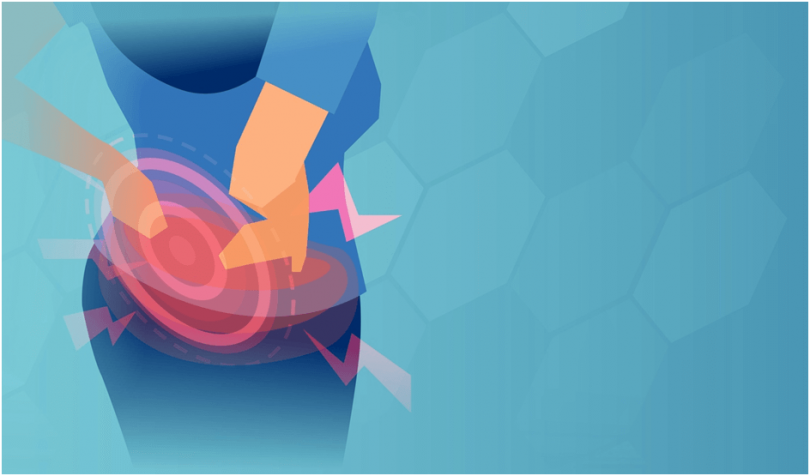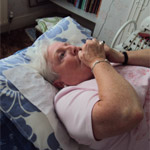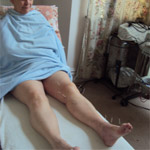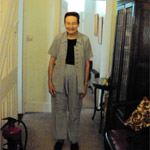Do you know what’s a real pain in the back? Sciatica
The medical term relates to a set of symptoms caused due to the general compression or irritation of one of five spinal nerve roots in your lower back.
Despite their name, these spinal nerves don’t just have an impact on your back. They run all the way down your legs. Which means sciatica can cause lower back pain, a pain in the buttock or leg that is worse when sitting, burning or tingling down the leg, weakness, numbness or difficult moving the leg and a shooting pain that makes it difficult to stand up.
And, to make matters worse, this set of symptoms can intensify during the cold and wintery season.
So, why is sciatica worse during winter?
As Osteopath Denise Callaghan explains: “The cold weather can cause the muscles in your back to tighten. That’s because when the cold weather strikes, it causes your muscles to lose more heat, causing tightness.
“When your muscles get tighter, this can cause them to lose their range of motion and nerves can be pinched.”
So what’s the best way to keep on top of your sciatica? Here Denise shares her tips:
Tips to help keep your sciatica from worsening
1. Move
We all know how important the power of exercise can be. And the same goes for when it comes to keeping your sciatica at bay. With the colder mornings and darker nights, you might be tempted to stay inside and sit on the sofa in the warm.
However, it’s best practise for those living with sciatica to get up and walk short distances. That’s because sitting for long periods of time will increase the pressure on the discs in your lower back. Plus, science has proven that exercise and stretching is key for both our mind and body as it keeps our muscles flexible and our joints mobile.
2. Watch your posture
It’s all too easy to be hunched over a computer screen 9am to 5pm now that many more of us are working from home with less-than-ideal set-ups. However, the correct seating will reduce the strain on muscles and ligaments – including those in your back and lower body.
So sit upright, well back in your chair and keep your shoulders in line with your hips and with your chin back. Or, if you’re standing, stand straight with your shoulders gently back and your chin tucked in.
3. Drink your H2o
Fingers crossed you are already staying hydrated whether you have sciatica or not. But in relation to keeping this range of debilitating symptoms at bay, the discs between the vertebrae in the spine have a high-water content so drinking plenty of water will ensure they (and you) stay hydrated.
4. Try Osteopathy
Although sciatica can be immensely painful, Osteopathy can help with lower back pain.
The National Institute for Health and Clinical Excellence advises that manual therapy including osteopathy, acupuncture and a structured exercise program should be considered in the management of lower back pain.
How can osteopathic treatment help sciatica?
Osteopathic treatment for sciatica focuses on relieving pressure from the lumbar spine by addressing the mechanical re-alignment of the lumbar sacral area in conjunction with the rest of your body.
To do this your osteopath will work on many areas of the body and may advise on posture and your daily life activities. You will often be given exercises as part of your long-term care plan to help prevent further acute episode of sciatic pain.
More severe cases may require the use of anti-inflammatory drugs and some may required more interventional techniques such as steroidal injections or in extreme cases surgery.
If you are suffering with your sciatica and are in pain, why not get in touch? Denise has more than 20 years’ experience in the field and has helped a number of people during that time. But don’t just take our word for it.
Here’s what a testimonial from a client: “After receiving a short course of treatment from Denise, my back pain began to get noticeably better and I was able to return to work and normal every day routines in no time! I would highly recommend this treatment to anyone that suffers from a bad back, it really helped change my life.”





















